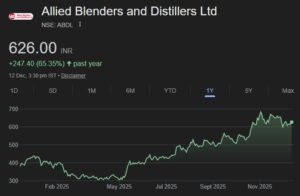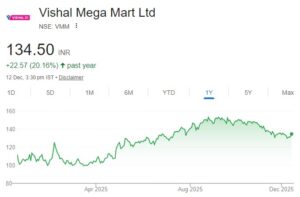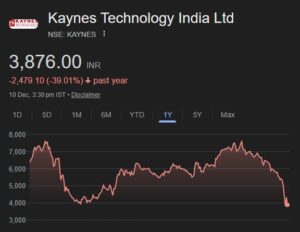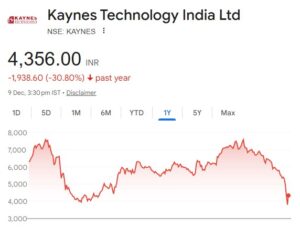
The upcoming Lenskart IPO has divided investor opinion. While many market commentators have raised red flags over valuation and governance optics, DSP Mutual Fund has taken a measured but optimistic stance, calling Lenskart a “high-conviction investment” based on business strength, management credibility, and execution capabilities.
This divergence underscores a key question for investors: does Lenskart justify its premium valuation, or is it another instance of growth optimism exceeding fundamentals?
DSP’s Rationale: Business Quality Over Valuation Comfort
In a rare public clarification, DSP Mutual Fund (@dspmf) explained its investment rationale following social media scrutiny. The fund stated it typically avoids commenting on individual stocks, but given “questions and concerns over the last 24 hours,” it felt compelled to communicate directly with investors.
DSP outlined its four-part investment framework:
-
Strong and scalable business
-
Trustworthy promoters
-
Demonstrated execution
-
Valuations
According to the fund, Lenskart meets the first three dimensions convincingly, though valuation remains elevated. DSP acknowledged that retail and e-commerce businesses are trading at expensive multiples, yet believes Lenskart’s operational model and scalability justify partial allocation.
The fund emphasized it has reallocated capital—by trimming a “slower-growing, similarly expensive position”—rather than deploying incremental cash. This implies DSP views Lenskart not as a speculative bet but as a portfolio upgrade within a defined risk budget.
Update
Usually, we do not comment on individual stocks that may or may not be part of our portfolios. However, given the questions and concerns on social media over the last 24 hours, we felt it is important to share clarity with our investors.
We have always been selective in…
— DSP Mutual Fund (@dspmf) October 31, 2025
Business Fundamentals: A Scalable Model With Structural Advantages
Lenskart’s investment appeal lies in its vertically integrated, omnichannel model. The company designs, manufactures, and retails eyewear both online and through over 2,000 physical stores. This integration allows better control over margins, pricing, and customer experience compared to traditional opticians.
Key strengths include:
-
Large addressable market: India’s eyewear penetration remains low, with roughly 30% of the population requiring corrective lenses, leaving significant room for organized expansion.
-
Omnichannel reach: Lenskart’s blend of online convenience and offline presence offers defensibility against pure-play e-commerce and brick-and-mortar competition.
-
Technology enablement: Proprietary virtual try-on tools, home eye tests, and data-driven supply chain management enhance customer stickiness and operating efficiency.
-
International optionality: Early traction in Southeast Asia and the Middle East provides optional upside beyond India.
These factors align with DSP’s stated preference for “strong and scalable businesses with demonstrated execution.”
Key Risks and Market Concerns
Despite operational strengths, valuation and governance optics remain the central points of investor concern.
-
Premium Valuation:
Lenskart’s implied IPO valuation reportedly exceeds ₹35,000 crore, translating into EV/Sales multiples comparable to global retail-tech peers. This leaves limited room for error if growth slows or margins compress. -
Promoter-Linked Transactions:
Reports indicate that founder Peyush Bansal recently acquired shares at a significantly lower valuation (around one-tenth of the IPO pricing) using debt financing. Critics argue this raises questions about fairness and timing, though such internal transactions are not uncommon in late-stage private rounds. -
Market Competition and Technological Disruption:
The prescription eyewear segment faces both organized competitors (Titan Eye+, Vision Express) and local optical shops. Moreover, advances in LASIK and myopia-curing eye drops could structurally reduce long-term demand for corrective lenses—a non-trivial risk for a company heavily reliant on that category. -
Offer for Sale (OFS) Structure:
Over 70% of the IPO reportedly consists of an OFS, meaning most proceeds go to existing shareholders rather than the company. This limits fresh capital infusion for growth and may dampen investor enthusiasm.
Relative Positioning: Expensive, But Not Alone
From a valuation standpoint, Lenskart sits alongside premium consumer-tech names such as Nykaa, Zomato, and Mamaearth—companies with solid top-line growth but uncertain profit trajectories. DSP’s admission that “valuations are expensive” is therefore consistent with a relative value trade rather than an outright bargain purchase.
By reallocating from a “slower-growing, similarly expensive” company, DSP appears to be prioritizing growth potential within an already stretched sector. This reflects a pragmatic approach: when all consumer internet and retail assets are richly valued, fund managers must differentiate based on execution quality rather than absolute pricing comfort.
Investment Takeaway: Balancing Quality and Price
For institutional and retail investors alike, Lenskart’s IPO offers a familiar dilemma — quality at a high price vs. value at a discount.
DSP’s position suggests confidence in Lenskart’s business model, leadership team, and operational execution outweighs near-term valuation discomfort. However, the market’s skepticism reflects valid concerns around corporate optics, capital allocation, and structural competition.
Ultimately, the investment case for Lenskart hinges on whether it can sustain 25–30% revenue growth while moving toward profitability. If the company delivers consistent execution and brand expansion, current valuations could normalize over time. Conversely, any operational hiccups or margin compression could make the IPO pricing appear excessive in hindsight.
Conclusion
The Lenskart IPO has become a litmus test for how investors price quality, scalability, and governance in India’s new-age retail sector.
DSP Mutual Fund’s stance signals conviction-driven selectivity rather than blind optimism. The fund appears to be betting that Lenskart’s integrated model, brand strength, and leadership execution can justify premium multiples in the long run.
Whether this conviction pays off will depend not on sentiment, but on sustained earnings growth and disciplined capital management in the post-listing phase.





